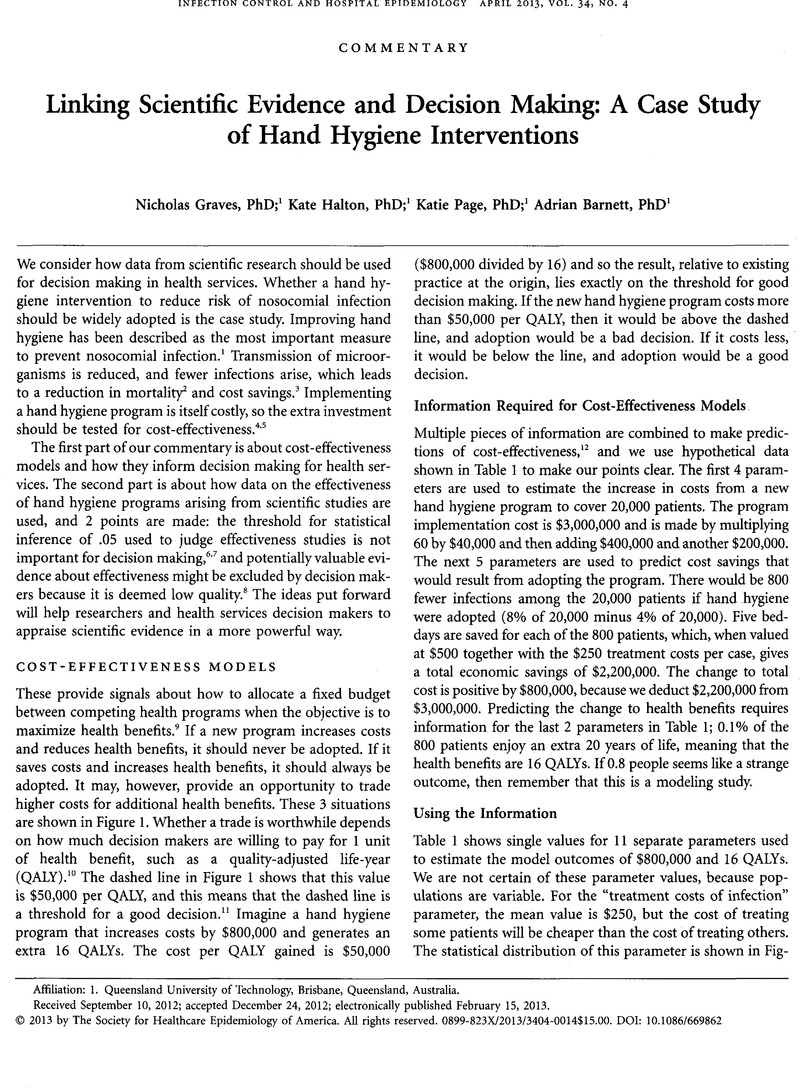Crossref Citations
This article has been cited by the following publications. This list is generated based on data provided by Crossref.
Graves, Nicholas
Page, Katie
Martin, Elizabeth
Brain, David
Hall, Lisa
Campbell, Megan
Fulop, Naomi
Jimmeison, Nerina
White, Katherine
Paterson, David
Barnett, Adrian G.
and
Deshpande, Abhishek
2016.
Cost-Effectiveness of a National Initiative to Improve Hand Hygiene Compliance Using the Outcome of Healthcare Associated Staphylococcus aureus Bacteraemia.
PLOS ONE,
Vol. 11,
Issue. 2,
p.
e0148190.
Doran, Michael
Barnett, Adrian
Leach, Joan
Lott, William
Page, Katie
and
Grant, Will
2017.
Can video improve grant review quality and lead to more reliable ranking?.
Research Ideas and Outcomes,
Vol. 3,
Issue. ,
p.
e11931.





